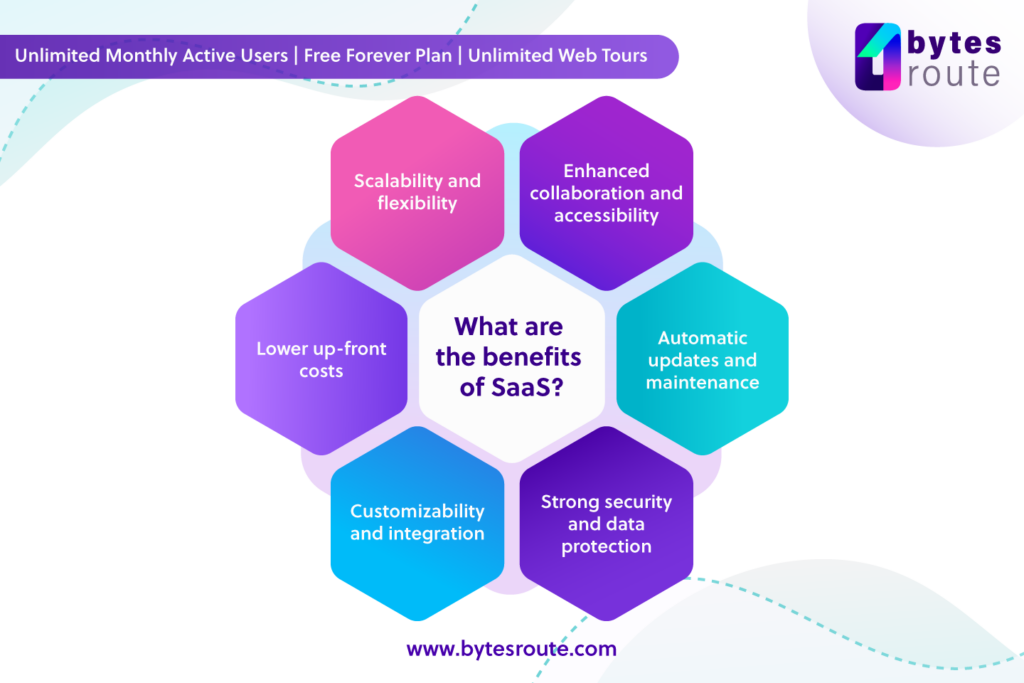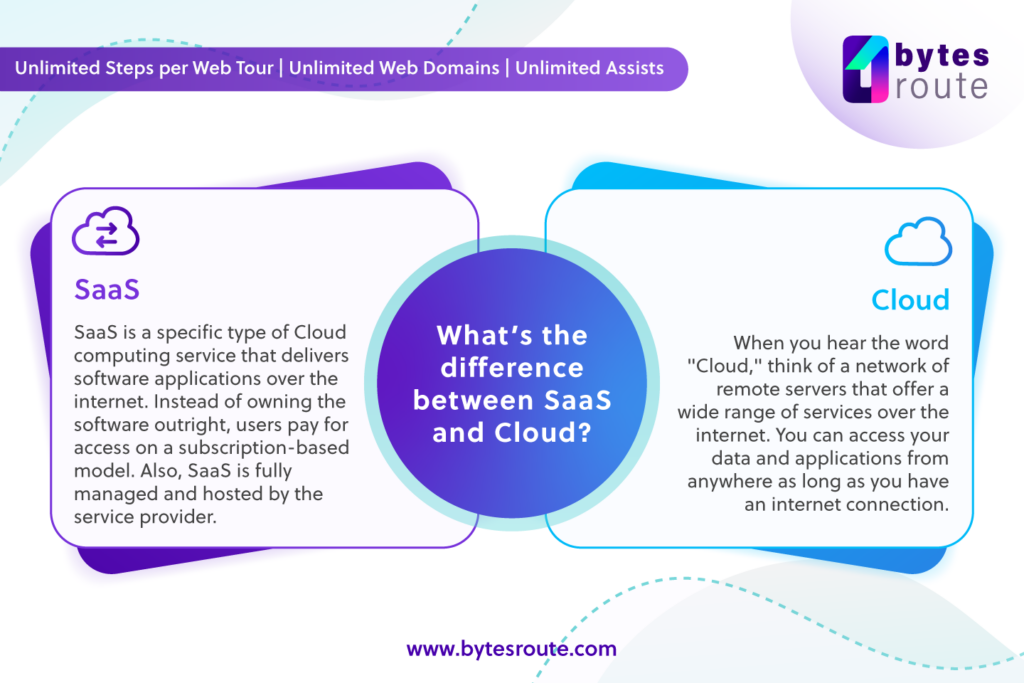What is Software as a Service (SaaS)?
Software as a Service, commonly abbreviated as SaaS, refers to a type of software delivery model where users can access an application or software through the internet, rather than downloading and installing it locally on their own computers.
In simpler terms, SaaS allows users to use software applications via a subscription model, usually on a monthly or yearly basis, with the provider hosting the software on their own servers and handling maintenance, upgrades, and security.
The use of SaaS has grown in popularity over the past several years, particularly in the business sector, because it offers a flexible, cost-effective, and scalable solution for users, without the need for significant IT infrastructure and support.
What are the Characteristics of SaaS?
There are several key characteristics of SaaS that make it an attractive option for businesses of all sizes.
One of the primary benefits of SaaS is its subscription-based pricing model. Rather than having to purchase the software outright, users can access SaaS applications for a recurring fee. This makes it easier for businesses to budget for software expenses, as well as to scale up or down as needed.
Another key characteristic of SaaS is that it is typically fully hosted and managed by the service provider. This means that users do not need to worry about maintaining servers or updating software, as these tasks are handled by the provider. This can save businesses a significant amount of time and money, as they do not need to invest in their own IT infrastructure.
SaaS applications are also accessible from anywhere with an internet connection, making them a flexible option for businesses with remote or distributed workforces. This can help to increase productivity and collaboration, as employees can easily access the same applications and data regardless of their location.
Another plus of SaaS applications is that they are typically designed to be easy to use and integrate with other software applications. Eliminating the need to switch between apps or manually transfer data between systems, can assist to optimize workflows and boost productivity.
The benefits of SaaS

As the business landscape continues to evolve, companies are always seeking new and innovative ways to improve their operations, stay competitive, and increase efficiency.
So what exactly are the benefits of SaaS for businesses? Here are some of the top advantages:
- Lower up-front costs: With SaaS, businesses can avoid the high up-front expenses of purchasing and installing traditional software. Instead, SaaS is typically offered on a subscription basis, with a pay-as-you-go model that can be more economical in the long run.
- Scalability and flexibility: Since SaaS applications are delivered over the internet, they can be easily scaled up or down based on business needs. This flexibility is particularly useful for businesses that experience seasonal fluctuations or rapid growth, as they can adjust their software usage accordingly.
- Enhanced collaboration and accessibility: SaaS applications are built to be accessed from any device with an internet connection, enabling improved remote collaboration and work without the need for on-site servers or infrastructure.
- Automatic updates and maintenance: With SaaS, businesses don’t need to worry about maintaining the software or performing updates, as the software provider handles this. This saves businesses time and resources that can be better allocated elsewhere.
- Strong security and data protection: SaaS providers are responsible for maintaining strong security measures and protecting user data, which can be a significant advantage for businesses that lack the resources to maintain their own cybersecurity measures.
- Customizability and integration: Businesses can adapt SaaS solutions to their specific requirements because of the software’s customizability and the ease with which it can be integrated with other software tools.
By leveraging these benefits, businesses can improve their operations, increase efficiency, and stay competitive in a rapidly changing business environment.
SaaS versus Cloud: What’s the difference?

If you’ve ever felt confused about the terms SaaS and Cloud, you’re not alone. Although they’re often used interchangeably, they actually refer to two different concepts. Both rely on the internet to deliver software services, but they each have their own unique approaches.
When you hear the word “Cloud,” think of a network of remote servers that offer a wide range of services over the internet. You can access your data and applications from anywhere as long as you have an internet connection. Depending on what you need, Cloud services can be public, private, or hybrid.
On the other hand, SaaS is a specific type of Cloud computing service that delivers software applications over the internet. Instead of owning the software outright, users pay for access on a subscription-based model. Also, SaaS is fully managed and hosted by the service provider, which means users don’t have to worry about server maintenance or software updates.